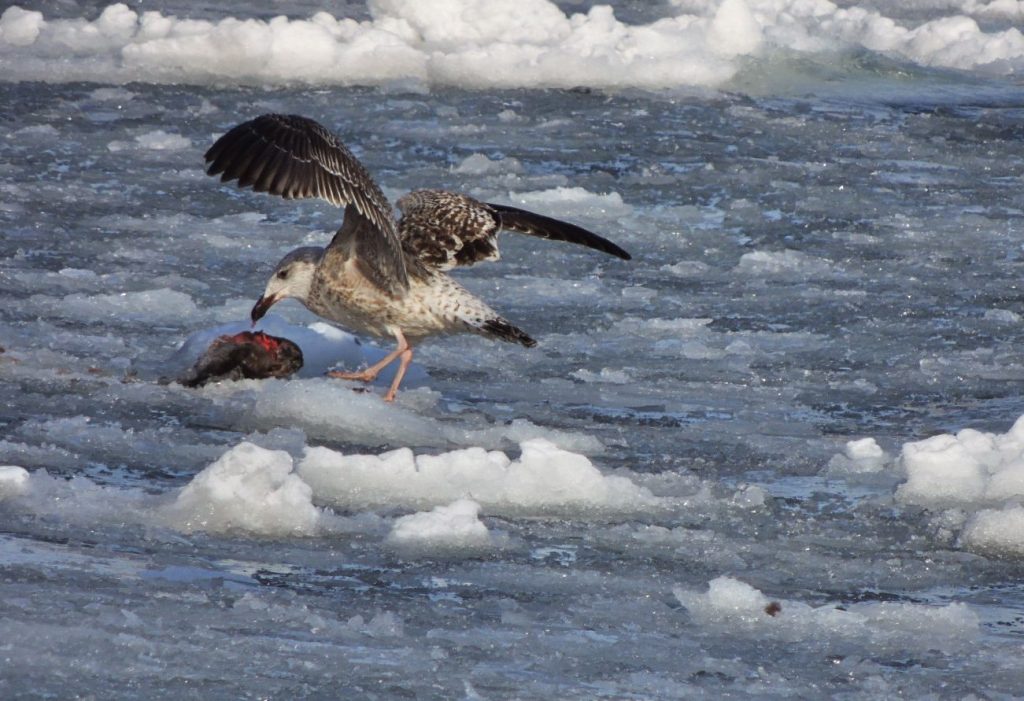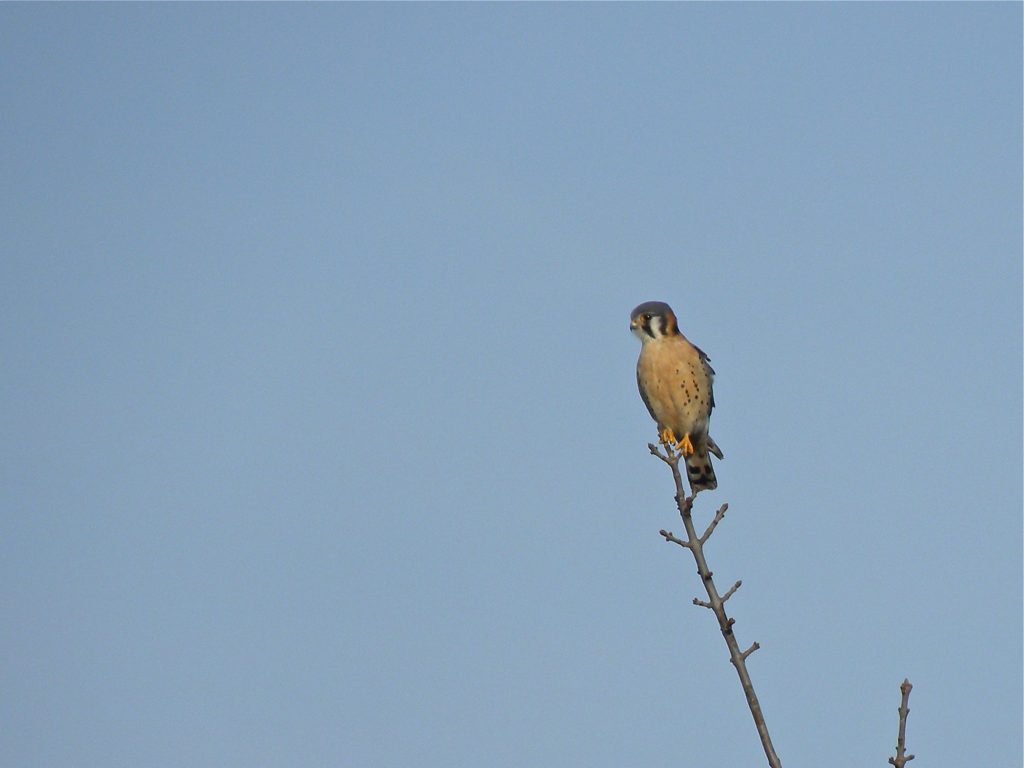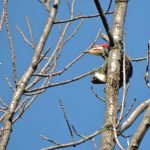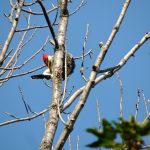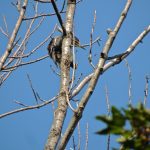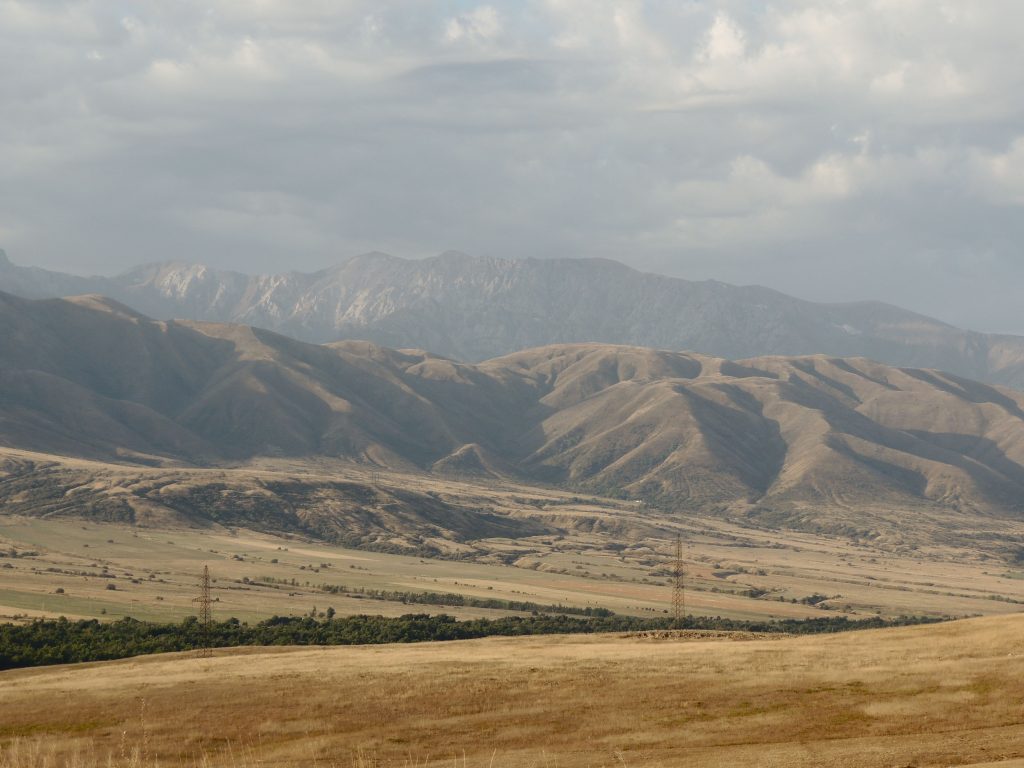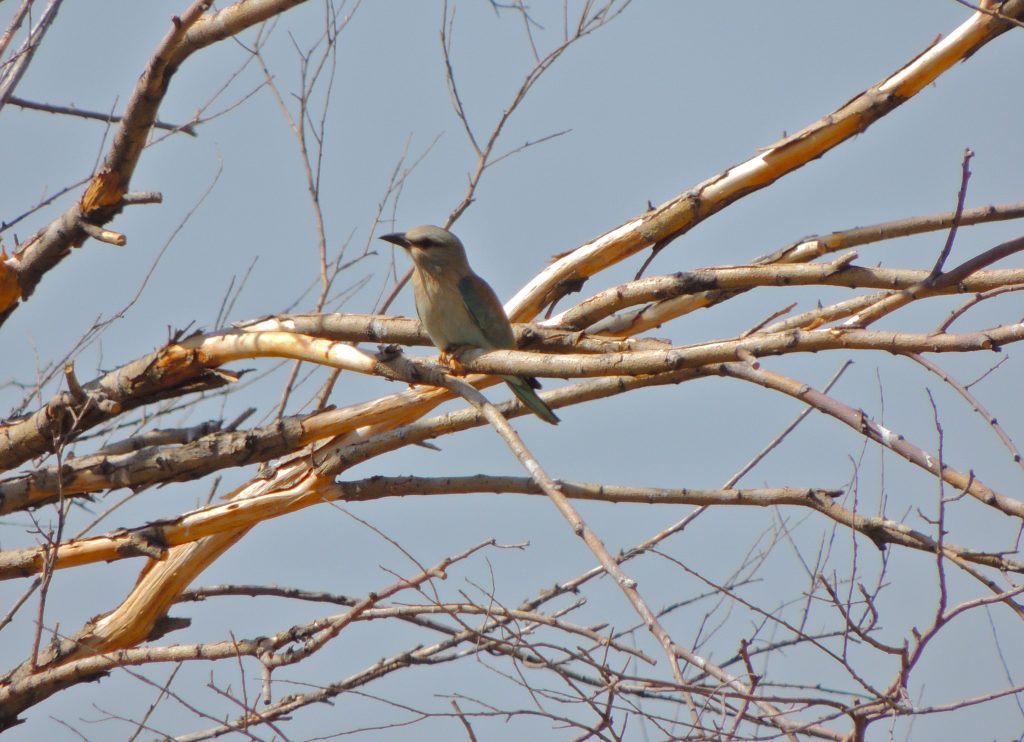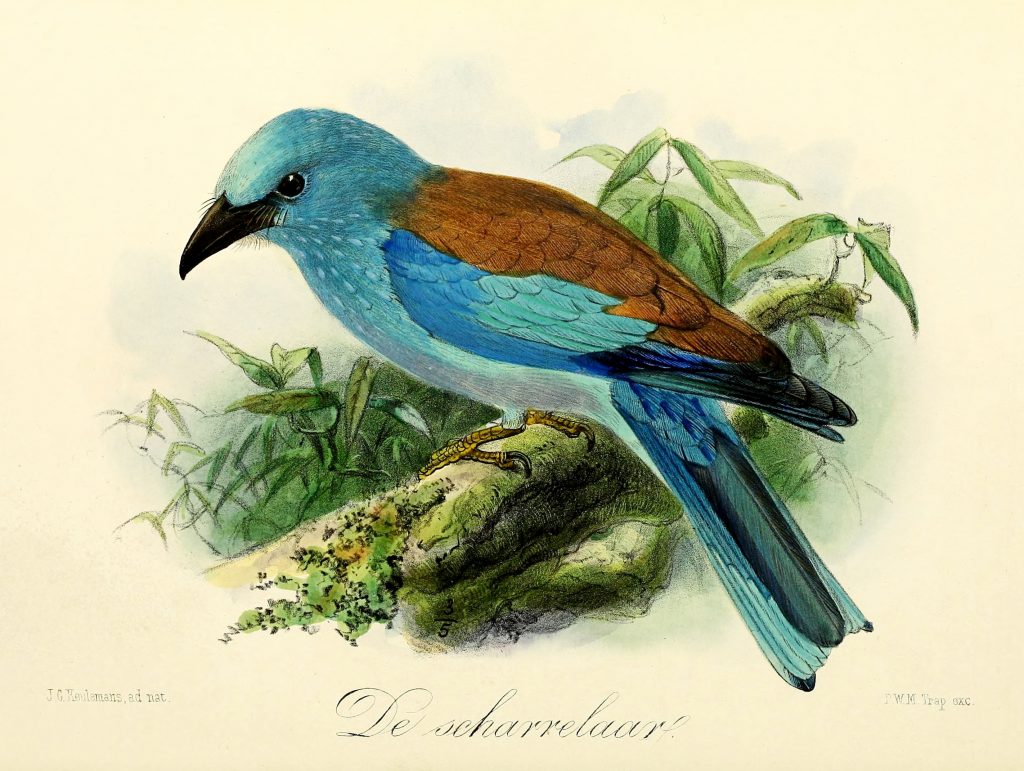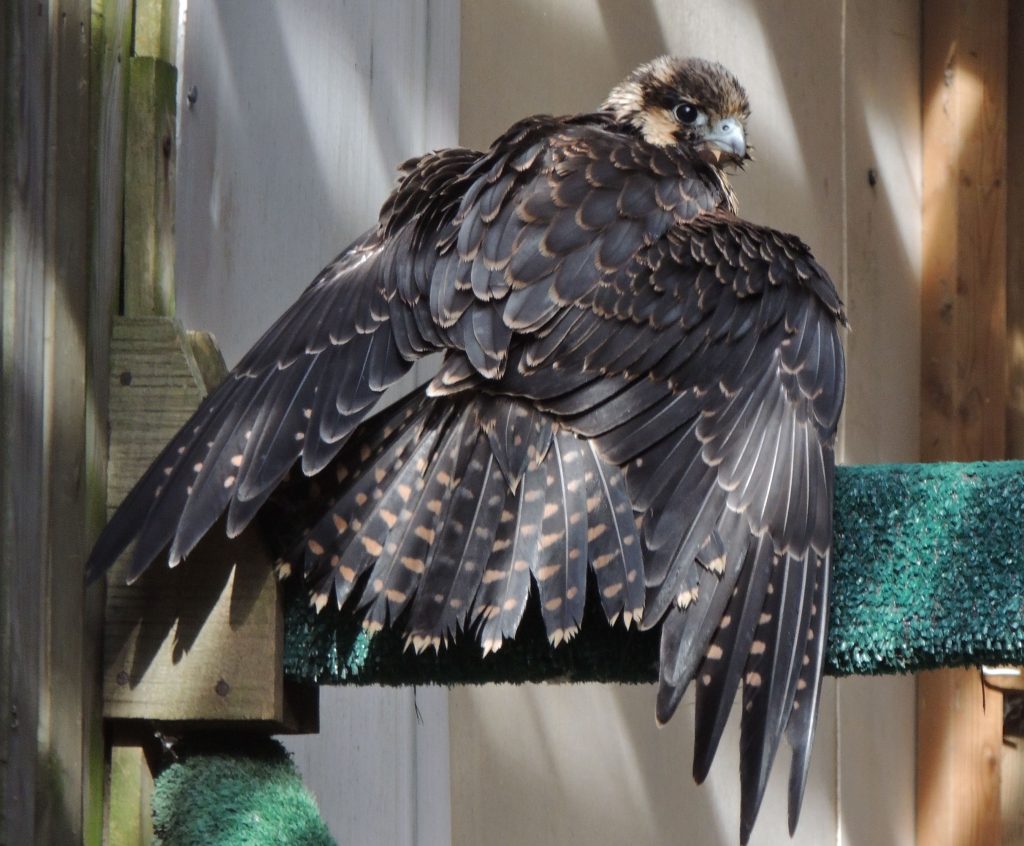December 21 2016. Bronte Harbour ON. I was reminded today that one of the things about birding and this follow-up writing exercise, is that my story is as much about the texture of the day as the calibre of the bird(s) that makes the news. Today for example, arguably one of the least productive days of birding in memory. I believe I can list the sightings of the day – and it won’t take long: American Crow, Red-tailed Hawk, Mallard, Canada Goose, Common Merganser, Red-breasted Merganser, Great Black-backed Gull, Black-capped Chickadee and Mourning Dove; nine species!
What then, was it about the texture of the day? The shortest day of the year, sunlight in limited supply, uneven crusty and sometimes deep, snow on the ground and a quest by three, faintly long-in-the-tooth, usually easy-going birders to see what we could find; with luck maybe an owl or two.
To cut to the chase we didn’t see many birds and we didn’t see any owls. The best bet for most winter owls (other than Snowy Owls) is to check dense groves of evergreens like cedar, spruce and pine where they like to roost hidden from assault or predation. But although we hiked and stumbled along three or four deep-snow kilometers and scanned pine after pine and spruce after spruce, the best we could say was that we found a spruce with evidence of owl poop .
But owls aside, we also walked around the encompassing arm of a now-empty yacht-basin hoping for some nice winter ducks (and maybe a Snowy Owl). On the fractured plates of thin ice, dozens of Canada Geese sat idly passing the time of day. A handful of mergansers cruised by and then a Great Black-backed Gull wheeled into view and settled at the end of a floating pier.
The sight of the gull gave me a little shiver of pleasure; such handsome birds! If they weren’t just another raucous gull or so bloodthirsty at skewering a meal, or if they had some kind of noble bearing, they might, as the world’s largest gull species, have earned a fond place in the public imagination. But it hasn’t worked out that way for them. Still I admire them and today’s was easily my Bird of the Day – not that it had a lot of competition.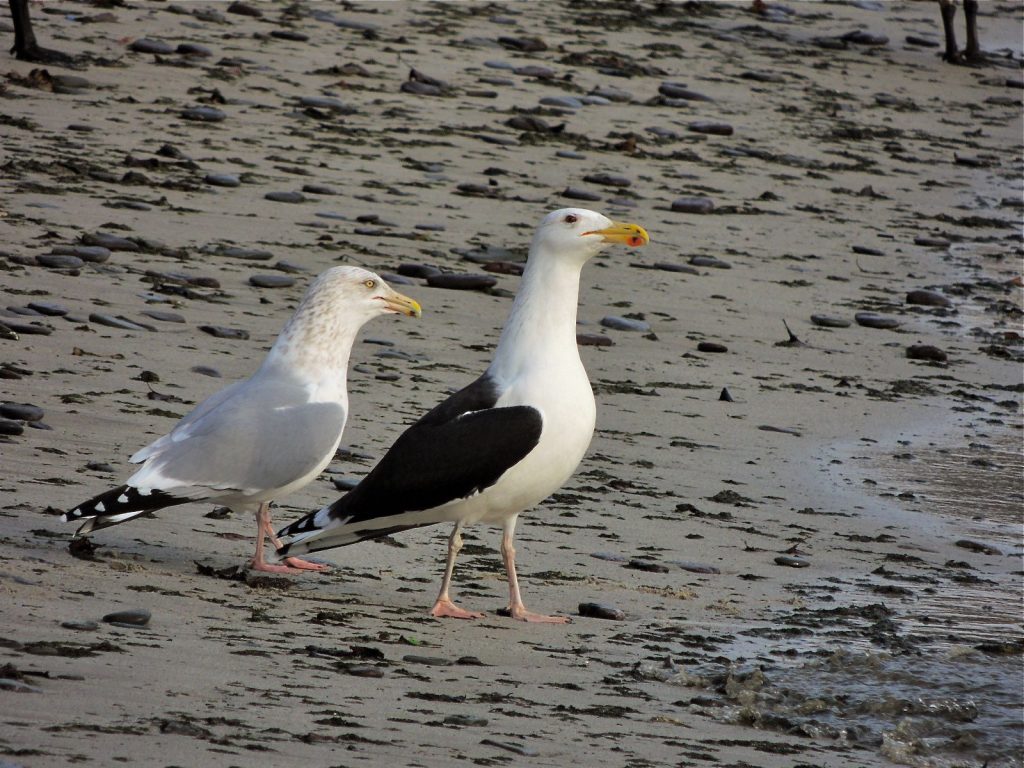
Here’s a couple of photos: Above of a Great Black-backed Gull and a Herring Gull side by side; Below taken three winters ago of a young-plumage Great Black-backed Gull polishing off the remains of an indeterminate duck – on ice.